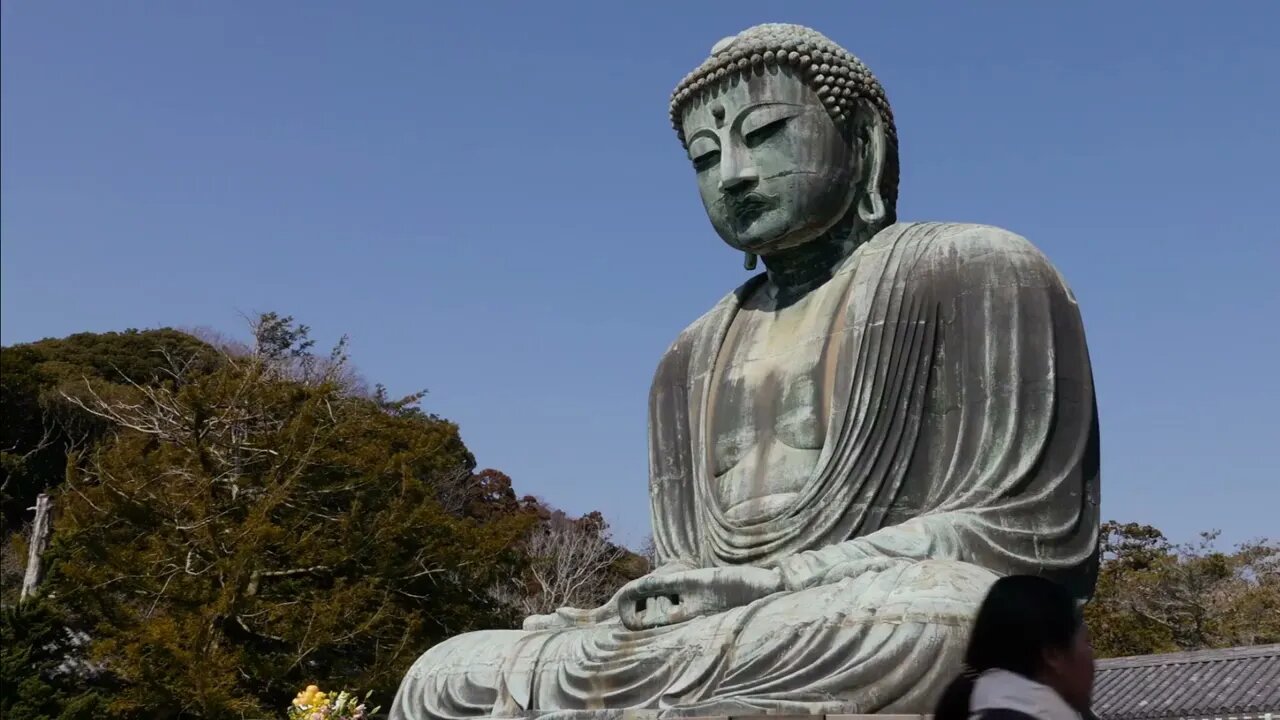Premium Only Content

Kamakura Daibutsu - Kanagawa - Great Buddah
The Kamakura Daibutsu, also known as the Great Buddha of Kamakura, is an immense bronze statue situated in Kamakura, Kanagawa Prefecture, Japan. Constructed in 1252 during the Kamakura period under the sponsorship of regent Hojo Tokiyori, the statue stands at a remarkable height of 13.35 meters (43.8 feet) and weighs an impressive 93 tons.
Originally enshrined within the sacred precincts of Kotokuin Temple, the Kamakura Daibutsu bore witness to Japan's turbulent history. Enduring the ravages of natural calamities, such as typhoons and tsunamis, the temple's structures were repeatedly damaged over the centuries. Eventually, it was decided to leave the awe-inspiring Buddha exposed to the elements, giving it an air of stoic endurance.
As a symbol of veneration towards Emperor Shaka (Emperor Shomu), the statue carries deep religious significance. However, its significance transcends its religious origin, becoming an emblem of Japan's cultural identity and artistic craftsmanship.
Today, the Kamakura Daibutsu continues to attract tourists and pilgrims alike, who are captivated by its serene presence and historical resonance. Restored and preserved diligently over time, the statue serves as a living link to Japan's past, inspiring reflection on the country's enduring legacy of spirituality and resilience.
Standing amidst Kamakura's peaceful surroundings, the Great Buddha remains an enduring symbol of Japan's cultural heritage, drawing visitors from across the globe to experience its profound historical and spiritual aura.
-
 LIVE
LIVE
DynastyXL
2 hours ago💥 DynastyXL Takes On Fortnite Super Season! High Energy, Big Plays & Full Chaos! Jump IN!
47 watching -
 4:35:48
4:35:48
MyronGainesX
9 hours ago $11.94 earnedIsrael Under Attack By Iran...War Updates And MORE!
32.6K32 -
 14:05
14:05
Dr Disrespect
17 days agoDRDISRESPECT Takes Over BATTLEFRONT 2
28.5K9 -
 1:22:25
1:22:25
Flex011
2 hours ago $0.66 earnedFirst Time LIVE – Haunted, Hunted, and Losing My Mind (You’ll Scream Too)
13.9K1 -
 2:02:24
2:02:24
Side Scrollers Podcast
22 hours agoThe BIGGEST FLOP of 2025 | Side Scrollers Live
64.4K8 -
 LIVE
LIVE
Anvilight
2 hours agoCall of Duty | Mostly Peaceful Black Ops 6 | June Creator Program Day #14
97 watching -
 LIVE
LIVE
Sacred Sage
3 hours ago $0.28 earnedDevil May Cry 5 Blind Playthrough : It Begins!
23 watching -
 3:29:07
3:29:07
The Pascal Show
21 hours ago $8.58 earnedDIDDY TRIAL LIVE! KANYE IN THE BUILDING! Assistant Jonathan Perez Testifies! Diddy Trial Day 23
33.7K8 -
 8:17
8:17
Due Dissidence
19 hours agoPalantir is a CREATION of Post-9/11 Hysteria - w/ Derrick Broze | TMWS
21.3K12 -
 7:00
7:00
Zach Costello
21 hours agoMedia CAUGHT Covering Up ATTACK on Homeland Security Secretary
28.4K27